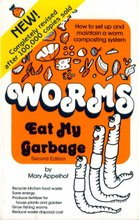Thursday, 18 January 2007
Friday, 12 January 2007
Terrorists strike the worm bin?
'Millipedes are detritivores, earth's natural recyclers. They feed on plants and animals that have died, which recycles nutrients back into the soil much faster than waiting for the plant or animal to decompose naturally.'
However whilst millipedes appear to be a good thing centipedes are not; they like eating worms and it appears that they don't take to kindly to human contact either:
'Centipedes bite. They have strong jaws that inject venom into their victims. A centipede bite is a very painful and unforgettable experience. The affected area will become increasingly painful, inflamed, and will secrete pus. You'll be sorry if you attempt to touch or handle this creature.'
If I do have centipedes then should I risk my precious hands or let nature take it's cause?!
Worryingly as the image shows below it looks like part of a worm has had an unfortunate incident resulting in loss of (part of) body. Initial investigations by the Worm Police Department (WPD) suggest that there are two possible suspects; firstly a gang of (potentially) centipedes roaming the worm bin set upon the poor worm while he/she wasn't looking, or secondly human intervention at feeding time could have resulted in 'accidental limb severing'. The investigation continues.


Waste added today: it was all a bit mushy and smelly but i think there were probably potato peelings, onion skins, apple cores, teabags and lettuce leaves in there.
Tuesday, 9 January 2007
Sunday, 7 January 2007


 Added today: potato, carrot, onion peelings, teabags
Added today: potato, carrot, onion peelings, teabags
Saturday, 6 January 2007
All is well...
Food added: Carrot, potato, apple peelings, teabags
Friday, 5 January 2007
2007: The year of free worm love?

FACT: In one year two mature worms can produce 1,500 worms per year in ideal conditions
A new year, a new approach...

Organic waste added: green beans, onion skins, banana skins, lettuce, potato peelings, normal teabags, roasehip infusion teabags, nettle tea leaves, carrot peelings, crushed egg shells.
Whilst carrying out the soil removal I came across many new members of the bin and some which could have been no more than a week old (see images below) and see the video!





